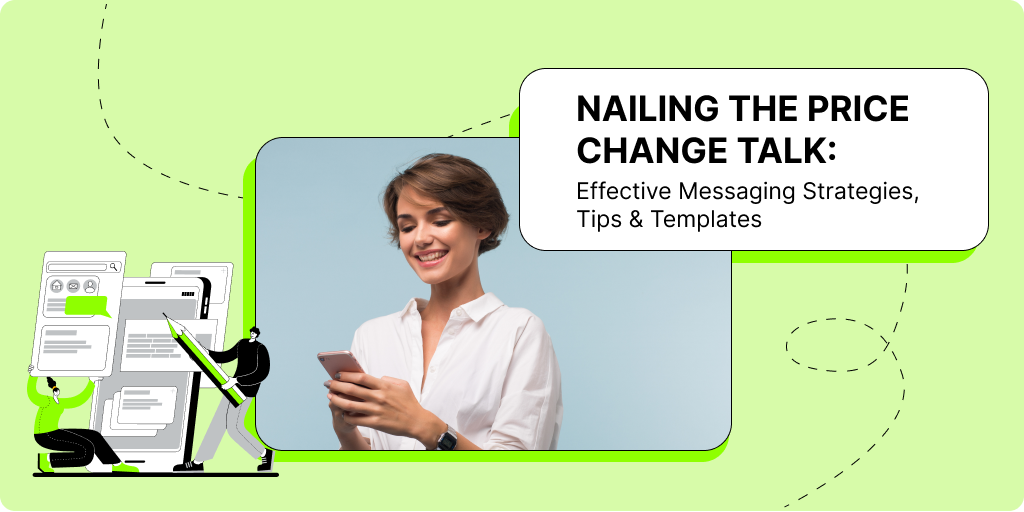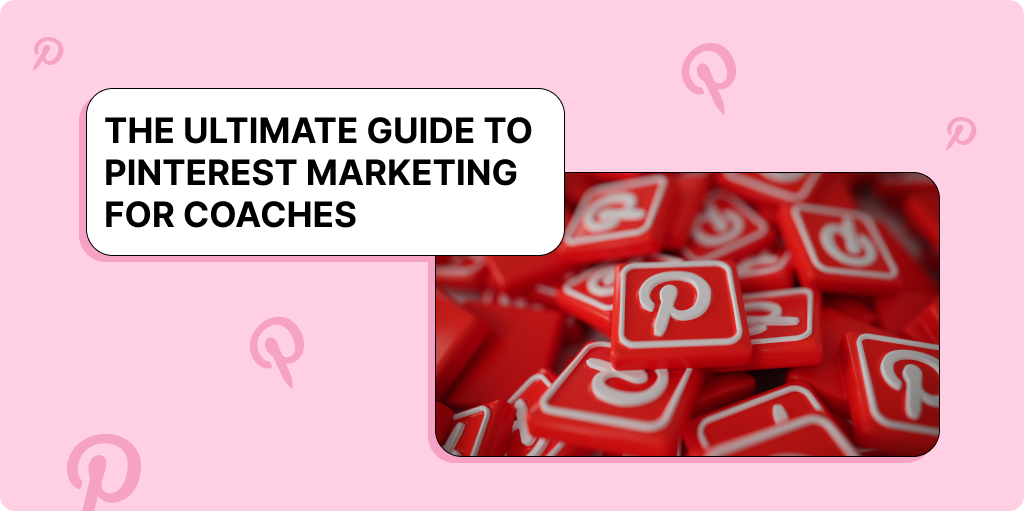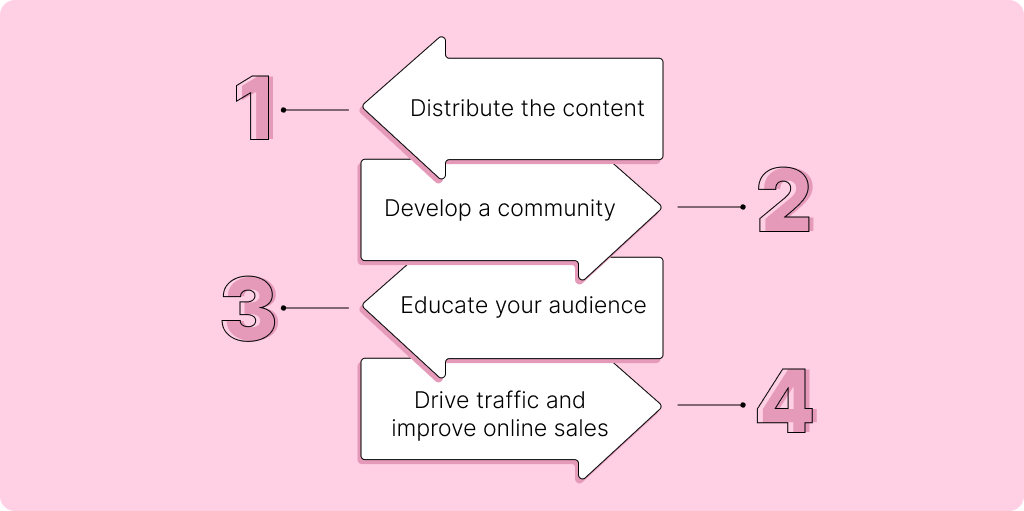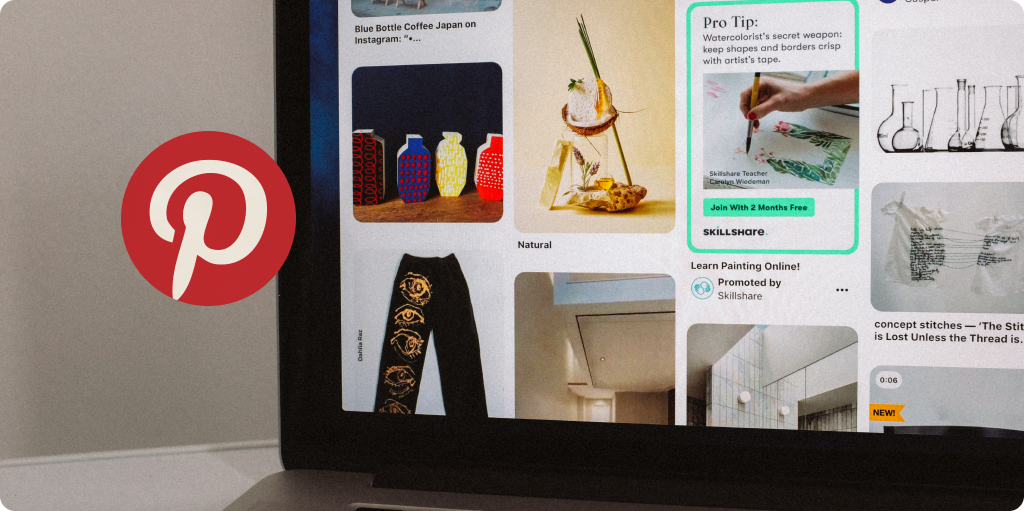 Nailing the Price Change Talk: Effective Messaging Strategies, Tips & Templates
Nailing the Price Change Talk: Effective Messaging Strategies, Tips & Templates
Learn how to effectively communicate price changes to your customers with our expert tips. Balance customer trust and loyalty while scaling your business!

Pinterest marketing is quite efficient. Marketers attract Pinterest users by providing the material that is too good to pass up. With over 433 million users on Pinterest, why wouldn’t coaches want to be there? Not to mention that 83% of users have made a purchase based on Pinterest content. So, how can your company use Pinterest as a marketing tool to increase brand recognition and conversions?
In this article, we’ll address that question as well as explain how Pinterest works, which Pinterest marketing methods you should employ, how coaches can profit from the platform, and which tools you can use to guarantee your Pinterest marketing approach is effective. But first, let’s go through the platform and how it works – let’s get started.

Many entrepreneurs think that focusing on generating a viral effect among tech-savvy early adopters is the greatest strategy to recruit and keep consumers. And, although there’s no question that this may have a ripple effect among that small niche of users (which subsequently spreads to the broader public), there are just as many failed ideas that never got the traction they thought they deserved due to their ultra-narrow-focused risk.
Pinterest was intended to challenge this widespread behavior from the beginning. Rather than attempting to attract primarily Bay Area techies, the platform wished to improve on something we all do, such as saving and organizing things. 11 billion dollars later, Pinterest became a power in its own right, due to the app’s inclusion in Apple’s App Store and a mention in Time magazine. Only then did many begin to grasp how Pinterest could fit into their hectic digital lives. They began “pinning” everything from recipes to phrases to clothing and adorable home décor ideas.
Pinterest is now much more than just a place to organize your passions and the stuff you want to keep. Pinterest, like any social network, can grow to fill whatever time you allow it, and for knowledge, entrepreneurs wondering, “Where can I sell my online courses?” this gives a tremendous marketing opportunity if used intelligently.
Focus on the following:
Pinterest monetization occurs naturally when you capitalize on the platform’s assets. You’ll need to properly set up your account, understand how to produce pins that advertise your knowledge items, and optimize your pins so that your target audience can find them. Pinterest is one of the least-known locations to market your coaching course, making it an excellent platform for differentiation. But where do you begin? Pinterest marketing is far more than simply looking for appealing images to upload or interesting wording to utilize. Let’s take a step-by-step look at how to build a Pinterest presence for your online course.
Pinterest is a social networking site where users may discover, share, and save visually appealing information that they find inspiring, useful, or entertaining. Users post or Pin their favorite material to boards with a common subject to keep it structured so that other users may find fresh information that is relevant to their interests. After signing up, you can start sharing material and, as a result, social media marketing on the site.
To get the best use of the platform, upload material from your computer or mobile device, Pin stuff from the platform, and add content from the web via the Pinterest browser button. Participation is essential. Follow your friends’ and rivals’ boards, “Like” and comment on other people’s Pins, re-Pin information, and include links to your website and blog in your Pins.
It’s vital to understand that Pinterest has both personal and commercial accounts. Selecting a business account grants you access to Pinterest Analytics as well as additional tools such as a visual search tool, a native video player, and the option to run Pinterest advertisements if desired, making the platform perfect for marketers. Let’s have a look at some Pinterest marketing methods that can help you increase your influence and effect on your audience.

85% of Pinterest users seek and favor visual content. As a result, Pinterest is a particularly powerful platform for distributing all forms of material, including written blog content. In contrast to Instagram, users may click through live links. Pinterest boards are where you share stuff. Boards save all of your Pins and distribute them to your followers for them to explore. You may have as many boards as you like, and they can be categorised into themes, ideas, plans, or forms of inspiration to help your audience discover the information they need.
You may also ask individuals to join your boards, making it a “group board,” if you want additional contributors to post content that they think fits with the concept of your board. This is an excellent method for increasing engagement and conversation on your profile.
Online communities bring like-minded members together and act as useful centers for businesses. With a Pinterest community, you can expect your followers and admirers to interact with your boards, consume your material, and visit your website, creating traffic.
Every month, millions of individuals visit Pinterest. You may establish a devoted community of Pinterest users who may become customers by using your Pinterest board as a two-way street through which you can connect with and engage consumers (rather than a one-way billboard).

Although you may search for and add certain friends based on their name, Facebook account, and other identifiers, this is time-consuming and would make it difficult to significantly build your following. Instead, explore the following ways for expanding your Pinterest fan and follower network.
Pinterest is brimming with tutorials, infographics, how-tos, and connections to more instructive stuff. Given its proclivity for visual material, it’s an effective avenue for educating and engaging customers. Keep your target demographic in mind when generating and posting content for your Pinterest profile and marketing to users. You want to ensure that you’re sending out material that resonates with your target demographic, current customers, and buyer profiles on Pinterest in the same way you would when launching new goods, growing your branding or posting to other social networks.
You may accomplish this in several ways:
Unlike Instagram, Pinterest allows you to link your visual material to another website — specifically, your own. This tool allows you to post both textual and graphic information while also directing viewers back to your website. This is a great complement to your marketing because it may also increase online purchases. Many businesses use Pinterest to display product photographs while also sharing content.
For instance, Madewell’s board acts as a source of trip inspiration and is matched with genuine things they sell to make their audience enthusiastic about their brand, the lifestyle they advocate, and the notion of purchasing some apparel. By integrating Pinterest on your website, you’ll be able to simply route visitors from one of your web pages right to your Pinterest profile, allowing your leads and customers to start browsing your material (and perhaps following you!) in seconds.
These Pinterest widgets and buttons allow visitors to your website to connect with your Pinterest page by seeing and following your profile or going directly to a single Pin or board. The widget builder on the network allows you to rapidly tweak, develop, and add this feature to your site.
The 8 Pinterest marketing methods are applicable to instructors in any field. One of the reasons Pinterest is such a powerful social media tool is its global approach to marketing.
Create a Pinterest business account to sell to your key audience. As previously said, this free account gives you access to Pinterest Analytics (which we’ll go over in further detail momentarily) as well as other useful marketing tools like a profile that clearly shows you’re a business, Pinterest widgets, and Pinterest tags. You may easily convert an existing Pinterest account into a Pinterest business account without sacrificing any of your material or effort.
Worth noting: If you want to improve your business account and run ads on Pinterest, you may do so by upgrading your account — and setting up your payment method because this element of Pinterest is not free — and using the platform’s Ads Manager to target your audience more fiercely.
Your Pins and boards will become more searchable for visitors trying to discover material comparable to that of your brand if you choose the correct category for them to be shared in. Users on Pinterest may search for certain categories or just go to the “Categories” section of any profile on the platform to browse all content connected to the topic they’re looking for. Travel, health & wellness, and beauty are among the most popular Pinterest categories.
Pinterest, like other social media, has a multitude of photos and videos. You’ll want to make sure that not only are you sharing photographs and videos that will help you promote your brand and advertise your products/services but that they stand out among the others on the site. Otherwise, why would a user select you over your competitors?
Here are a few tips to help you share outstanding and distinctive visual material on Pinterest:
You’ll be more likely to appear in users’ feeds and searches if you employ keywords throughout your profile, posts, Pins, and boards. Pinterest keywords and phrases are connected to distinct categories that consumers search for. If you sell travel coaching, for example, you may use keywords and phrases like “vacation” or “going on a trip” in your profile and Pins. When someone searches one of those phrases, your profile and photographs will display in their newsfeed. Begin your Pinterest keyword research by Googling phrases related to your specialty within the platform itself.
Here are a few places on Pinterest where you may put keywords to boost your chances of ranking organically through search:

To increase the visibility and followers of your Pinterest account and content, post your Pins, photographs, and videos in other places. You may, for example, claim your company’s Pinterest account on Etsy and YouTube so that your fans can simply discover the various platforms you’re on and how they can watch more of your material.
Furthermore, claiming your account will give you access to statistics and data on all of these Pins, allowing you to determine which networks your audience is most interested in. You can also connect your Pinterest profile to your Facebook and Google accounts to simply add and locate friends, share material across networks, speed up your login on all accounts, and back up your profile in case you lose or forgot your password information.
You may begin and maintain personal ties with other Pinterest users and their accounts by following and interacting with them. This form of connection has the ability to instill a sense of devotion in your followers, causing them to return to your profile for inspiration, ideas, and product purchases.
4 strategies to use Pinterest marketing to develop strong and enduring relationships with your target audience:
Employ the same social media techniques you would on other social networks while utilizing Pinterest. Remember to communicate and engage with your followers, publish to (and update) your account on a regular basis, and avoid obvious self-promotion that appears forceful and forced on your audience.
5 best practices to boost engagement on Pinterest:
If you’re spending all of this effort on Pinterest marketing, it’s logical to think you’ll want to make sure the work you’re doing enhances your company’s conversions and brand recognition. So, to keep track of your referral traffic, amount of engagements leads produced, and anything else you’re interested in knowing more about, you’ll need to assess the results of your Pinterest marketing efforts. Pinterest Analytics is the simplest method to accomplish this.
Pinterest Analytics provides four key sorts of data, including:

Pinterest is a visual social media network. As a result, Pinterest marketing is an excellent platform for sharing videos and articles. Unlike Instagram, Pinterest users may access live links by clicking through them. Create a Pinterest board as your first step. Boards enable you to keep your pins and post material for your followers to find. You may create an endless number of boards and organize them into various themes, concepts, or plans.
Create one or more boards relating to your course and your company in general so that users may locate your material more simply. If you’re working on a coaching course with others, you may also ask them to join your board. This turns it into a “group board.” Following that, you and your teammates can share and pin your ideas and thoughts on the board.
When you establish your first board, you must select a category in which the information will be shared. This guarantees that individuals who are interested in your material and the topics you cover may find it (boards and pins). Users on Pinterest locate material by searching for it in the search box or scrolling down into the Categories area of any user’s profile to view similar stuff.
It’s time to start pinning now that your board has been created. Users frequently pin everything intriguing or unusual that comes across their path when browsing the web. You’ll need to build your own pins if you want to utilize Pinterest marketing to advertise your course. So, what types of pins are being shared and commented on?
You might be surprised! To begin, branded photos without faces receive 23% more pins than those with faces. If you’re camera shy, Pinterest is the place for you to shine. What’s more, as compared to other social networks, Pinterest members are unusually open-minded about branding. Indeed, 75% of Pinterest users are willing to view sponsored videos if the topic is relevant to them. Use Pinterest’s Promoted Videos if you have the funds. Videos with a duration of 30 to 90 seconds perform the best.
If you’re stuck for ideas beyond video commercials and images without people, consider seeing your course through the eyes of someone who wants to learn what you have to offer.
In addition to the photographs you use, you should make good use of Pinterest keywords. Keywords and phrases can be used in your profile, posts, pins, and boards. This increases the likelihood that your information will surface organically in the user’s feed when they search for what you have to offer. If you want to utilize Pinterest advertisements to market your coaching course, you can use the platform’s own keyword targeting tool to specifically target your ideal target.
Lastly, make use of hashtags. Hashtags are words or phrases preceded by the # symbol that allows users to browse subjects by simply clicking on that hashtag. These tags function similarly to those used on other social networks such as Instagram, so it’s probable that your users are already utilizing them to find new and interesting pins and boards to follow.
It is encouraged to publish at least three times every day, but no more than thirty times per day. That’s correct, we started per day! Pinterest Business accounts allow you to schedule pins, which is great news. You may also use third-party software to plan your pins ahead of time. So, now that you know what to publish and how frequently to share it on Pinterest, the issue is, “How can I obtain the best performance while promoting on Pinterest?” Here are some excellent practices to consider.
Note that no board is an island when promoting on Pinterest. Your Pinterest quotations may be fantastic, but if you’re simply marketing and not exploring, you’re missing out on Pinterest’s “interest” factor! It’s all about connections, just like every other marketing endeavor. This entails communicating with your target audience as well as complementary, non-competitive expertise entrepreneurs in your field on Pinterest.
How are your visitors interacting with your content? One of the primary reasons Pinterest has so many users is the multitude of options to pin and save items to boards. Pinterest features apps for all major smartphone manufacturers, as well as browser extensions that allow users to pin and share in a matter of seconds. Aside from that, many websites include a “Pin It!” social networking button at the bottom of their blog postings.
You might be shocked to hear that implementing all of these techniques and methods has the potential for a significant payoff: Pinterest users have the greatest buy intent of any social media user. You can do a lot more than simply share Pinterest quotes and photos to get even greater performance out of Pinterest if you want to go below the surface and truly make your course stand out.
#1: Be a storyteller

Humans are born storytellers. We may not congregate around campfires in caves anymore, but we still like a good story. Because Pinterest is a visual medium, it’s a terrific method to communicate a narrative with photos rather than just words. How can you describe what your course does and how it works using primarily images? It may be difficult at first, but visual storytelling may be a terrific approach to captivate visitors, especially if your subject matter is frequently perceived as dry, dull, or exceptionally complicated. If you can utilize images and videos to break down and demystify your topic, you’ll undoubtedly catch attention and set your course apart from all of the other Pinterest marketing users.
#2: Showcase your blog posts
Pinterest is a wonderful platform for promoting your blog entries. Although you cannot pin the entire post, you may add an image and then link that image to your blog for readers who want to learn more. This also applies to videos. Unlike Instagram, which requires you to include all promotional links in your profile (up to the point when you reach 10,000 followers), Pinterest does not. Users may go straight to your blog article by clicking through.
#3: Humanize your niche
This proposal is related to visual storytelling. Although photos without faces are more likely to be pinned, this does not need hiding behind your pins. Remember that Pinterest is a two-way communication channel. This allows you to reach out to talk and share information with others who share your interests. It also allows you to assist newbies in navigating frequent mistakes or bottlenecks when getting started in your field.
It’s a terrific method to spread love while also attracting new students and members. Begin advertising your coaching course right away! Pinterest has its own way of doing things, but it ultimately operates like many of the social networking sites you already know and love. When done correctly, it also serves as an ideal springboard for you to market your course, establish your credibility, and demonstrate your knowledge in an area where consumers are actively seeking assistance and information. And there’s no better time to get started than right now.
Pinterest marketing is an excellent approach to advertising your company and items. Pinterest is more than just a place to find recipes, clothing ideas, and projects. However, if your course is about any of those subjects, it’s a logical fit! It’s a well-balanced, well-organized, and inclusive forum for people of all ages and genders. That implies your target audience is almost certainly already on Pinterest, and the only thing missing is you!